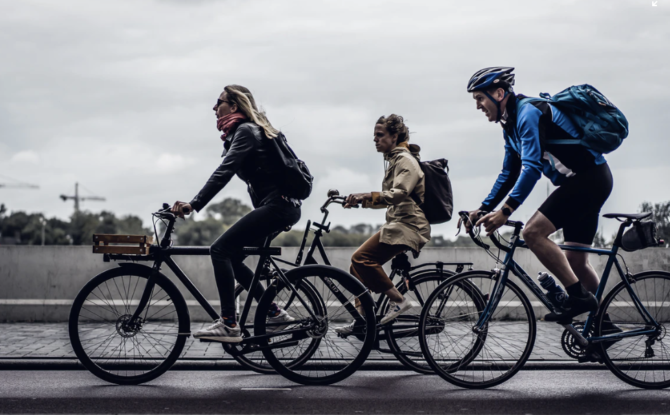From ArchDaily.com
Written by Dima Stouhi
What does the future of cities and transportation look like? It looks like the future will run on two wheels and a handle bar. Many explain the rise of cyclists as a shift towards a healthier and more economical lifestyle. But while that may be true, why would individuals feel inclined to ride bicycles if the roads don’t support it, or if there weren’t adequate spaces to park?
Architecture plays an important role in promoting the use of bicycles. Cities equipped with safe bicyclelanes, parking lots, and public bike facilities encourage citizens to refrain from using their cars, and opt for a much more sustainable means of transportation. Many have already began reshaping their urban infrastructure in a way that caters to bicycles, whether it is through bicycle bridges, widened cycling lanes, or permanent parking lots.
To celebrate World Bicycle Day, we are sharing 10 of the most bike-friendly cities across the world, and how they have adapted their urban spaces to fit the needs of cyclists.
Photo by Jamshed Khedri on Unsplash
From Streetsglog.org
U.S. cities don’t know nearly enough about how many people are biking — and until they harness the power of big data and static counters, they could remain in the dark about how to best support some of the most vulnerable users on the road, a new study argues.
In a recent paper for the National Institute for Transportation and Communities, researchers took a close look at the shockingly nascent science of bicycle counting and how cities could do a better job of measuring where its residents ride.
Countless American cities have invested in networks of car counters, whose infamous “level of service” data transportation leaders often use to justify dubious lane expansion projects on the busiest segments of their road networks. Far fewer U.S. communities, though, have invested in comprehensive physical or digital methods of counting people on two wheels, with many relying on little more than an annual paper-and-pen bike count conducted by volunteers, if they bother to count at all. That means that dynamic changes in ridership caused by easily fixable problems can go totally unnoticed until a resident makes a report — and even basic, critical metrics, like how likely pedestrians are to be killed in a fatal crash per miles traveled, aren’t analyzed at all.
With so little data on where (and even whether) people are riding, bike-focused infrastructure can all too easily be put on the back burner, as sky-high automobile counts bump car-focused projects to the top of the priority list.
“These estimates have been available for decades on the motorized side, but they’ve only become feasible in the last decade or so on the non-motorized side,” said Sirisha Kothuri, senior research associate at Portland State University and the lead author of the paper. “But we’ve always needed these network-wide estimates of bicycle volumes because they are really important for evaluating the safety, equity, health, and climate of our road networks.”
Photo by Dovile Ramoskaite on Unsplash



